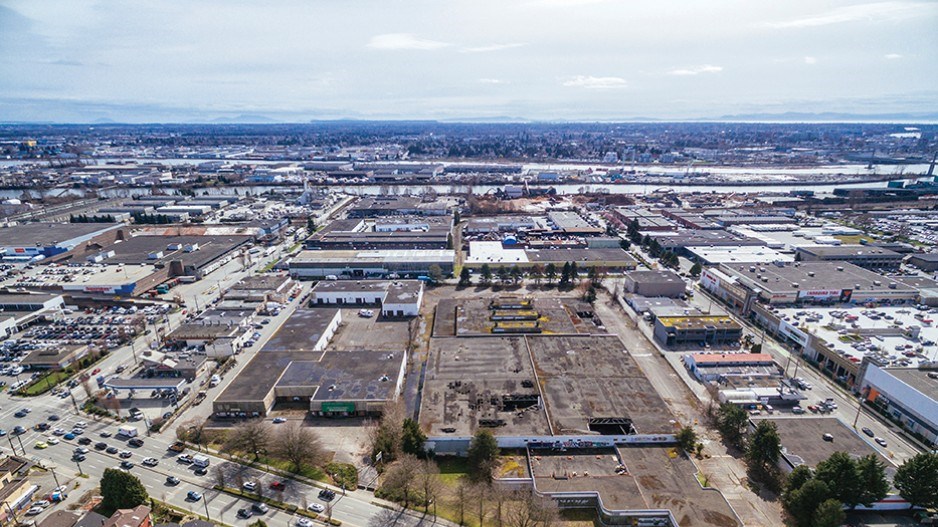Hungerford Properties has acquired two large South Vancouver industrial sites totalling 15.5 acres. The first, a 12.5-acre site at 86 Southeast Marine Drive, is the largest industrial acquisition in the city of Vancouver in the last 10 years in terms of square footage.
Formerly owned by Walmart (NYSE:WMT) and previously a Dueck car dealership, the site has been vacant for approximately 15 years and is South Vancouver’s biggest developable parcel of industrial land.
A few blocks west, Hungerford has also bought a three-acre property at 396 Southwest Marine Drive. Currently home to a Kia Vancouver car dealership, the transit-oriented redevelopment property at Yukon Street and Marine Drive is one of the area’s few remaining sites envisioned to permit retail and commercial use.
The price Hungerford paid for the 15.5 acres was not released, but in 2007 the Canada China Trade Expo Centre Co. paid $13 million for just under one acre of industrial land on Laurel Street in South Vancouver.
There is also no information as yet on whether the sites will be redeveloped as strata or leased industrial space. Hungerford is known for both industrial lease and strata projects in Vancouver and Calgary.
The Kia site, in the heart of the new retail hub at Marine Gateway, is across from the Marine Drive SkyTrain station. The neighbourhood has grown 20% in the last five years. Additional population growth of approximately 12% is forecast by 2021 and 28% by 2026.
Bolstered by the Marine Gateway development and new residential condo towers, the area is among the city’s fastest-growing urban nodes.
“It is exciting to be part of this rapidly changing area of the city,” said Hungerford Properties partner Michael Hungerford. “It is not easy to find redevelopment sites of this size and exposure on transit in Vancouver. We will be working hard to transform the sites from single-use to large-scale, mixed-use commercial developments in the coming years.”
Matthew MacLean, senior vice-president at Cushman & Wakefield, said the Hungerford plan should “kick-start” the South Vancouver Gateway zone.
“With transit connectivity and a unique complement of large and small users and high-density residential, the area is prime for Vancouver’s next creative hub, much like Mount Pleasant and the Great Northern Way Campus,” he said.
Metro’s industrial vacancy rate plunges
Metro Vancouver’s industrial vacancy rate is a tight 1.9%, according to Colliers International, well below the five-year average of 3% and one of the lowest in North America.
“The trend of new developments having some pre-lease activity has not shown any signs of slowing down, which has spurred further development activity,” Colliers noted in its fourth-quarter 2017 industrial report.
In 2017’s last quarter alone, 722,722 square feet of industrial space was sold or leased in the Metro region, which marked 18 consecutive quarters of positive absorption, highlighting the consistently strong market demand. This is expected to put upward pressure on lease rates and land prices, Colliers suggested.
For all of last year, 3.8 million square feet of industrial space was absorbed in Metro Vancouver, while nearly 832,000 square feet of new inventory was added – 96% of it developed on speculation. Colliers notes that 93% of the speculative space was pre-sold or pre-leased before completion.
The city of Vancouver has a 1.9% industrial vacancy, but only 180,345 square feet of new inventory came onto the market last year, though another 547,732 square feet is under construction.
The average net lease rate for industrial space in the city is $15.83 per square foot.
However, industrial land prices are soaring, which could drive lease rates higher. In 2017, Boffo Developments paid $33 million for 1.5 acres on Raymur Avenue in Vancouver, while the Canada China Trade Expo Centre Co. paid $13 million for just under one acre of industrial land on Laurel Street in South Vancouver.
– Frank O’Brien




